 TM
TM
 TM
TM
|
Limited Edition
|

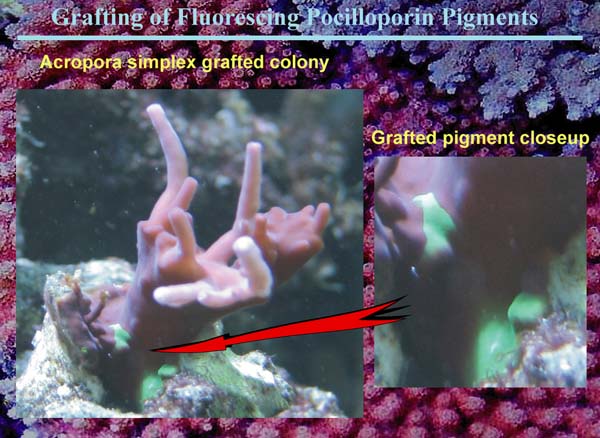

Update August 18th 2009 - Please note that we suspended fragment shipments during the summer of 2006. What happened was that the base of the colony was covered with Bryopsis algae and the base was killed off before we had the time to notice the problem. There had been three reservations harvested. One of those went to Clint Conway. There is currently only one known surviving fragment of the Grafted Simplex #1. Mike Poletti of Sacramento is the only one with this version and he had acquired a fragment from Clint Conway. Reeffarmers was able to salvage a large branch of the original colony, but it lacked any grafted spots. We let this branch grow for well over a year into a small colony. Then when we got time to revisit this experimental coral, we attempted grafting #2. We used a fluorescent green Pocillopora damicornis and managed to succesfully transfer pigments using the forced contact grafting technique. These grafted spot areas were purchased by World Wide Corals since we wanted to establish a version of this coral on the east coast. WWC has the only spots from Grafting #2. We then proceeded to do grafting #3 with the same green Pocillopora damicornis and it was successful. We now have a medium sized colony with about 4 different green grafted pigment spots. We will be growing and harvesting Grafted Simplex #3 and shipping those for the reservations on this web page. We will add images of grafting #2 and grafting #3 when we get time over the next few months.
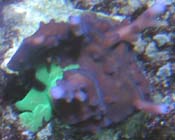 |
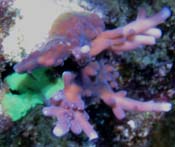 |
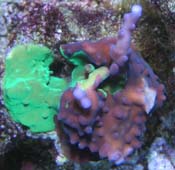 |
January 4th 2005 |
February 8th 2005 |
April 20th 2005 |
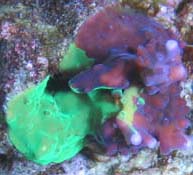 |
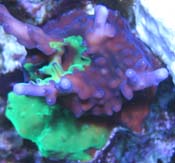 |
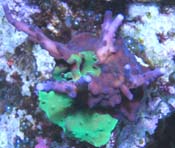 |
April 29th 2005 |
May 29th 2005 |
June 25th 2005 |
|
| ||
